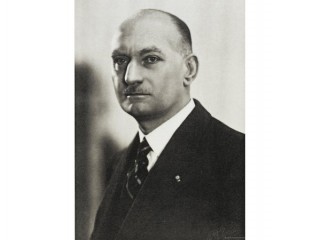
Corneille Heymans biography
Date of birth : 1892-03-28
Date of death : 1968-07-18
Birthplace : Ghent, Belgium
Nationality : Belgian
Category : Science and Technology
Last modified : 2011-12-20
Credited as : Physiologist, Aortic and carotid chemoreceptors, Nobel laureate
0 votes so far
After graduation Heymans worked at the Collège de France (under Prof. E. Gley), the University of Lausanne (under Prof. M. Arthus), the University of Vienna (under Prof. H. H. Meyer), University College London (under Prof. E. H. Starling) and Case Western Reserve University School of Medicine (under Prof. C. F. Wiggers).
In 1922 Heymans became Lecturer in Pharmacodynamics at Ghent University, and in 1930 succeeded his father, Jean-François Heymans, as Professor of Pharmacology, as well as being appointed Head of the Department of Pharmacology, Pharmacodynamics, and Toxicology; and Director of the J. F. Heymans Institute.
Heymans studied circulation, the sensory mechanism, and arterial blood pressure. Using severed dogs' heads, Heymans was able to demonstrate how the carotid artery regulates breathing. For this he was awarded the Nobel Prize in Physiology or Medicine for 1938. In 1950 he proved that specialized nerve endings called pressoreceptors, sensitive to stretch of the vessel walls, regulate blood pressure.
He performed most of his work at the J. F. Heymans Institute of Pharmacology and Therapeutics at the University of Ghent, named for Dr Heymans' father, who was a Professor of pharmacology and rector there. His father was Heymans' co-researcher on most of his early work, and probably would have shared Nobel honors had he not died several years before his son's nomination.
Heymans married Berthe May, an ophthalmologist, in 1929 and had four children. He died in Knokke from a stroke.
















